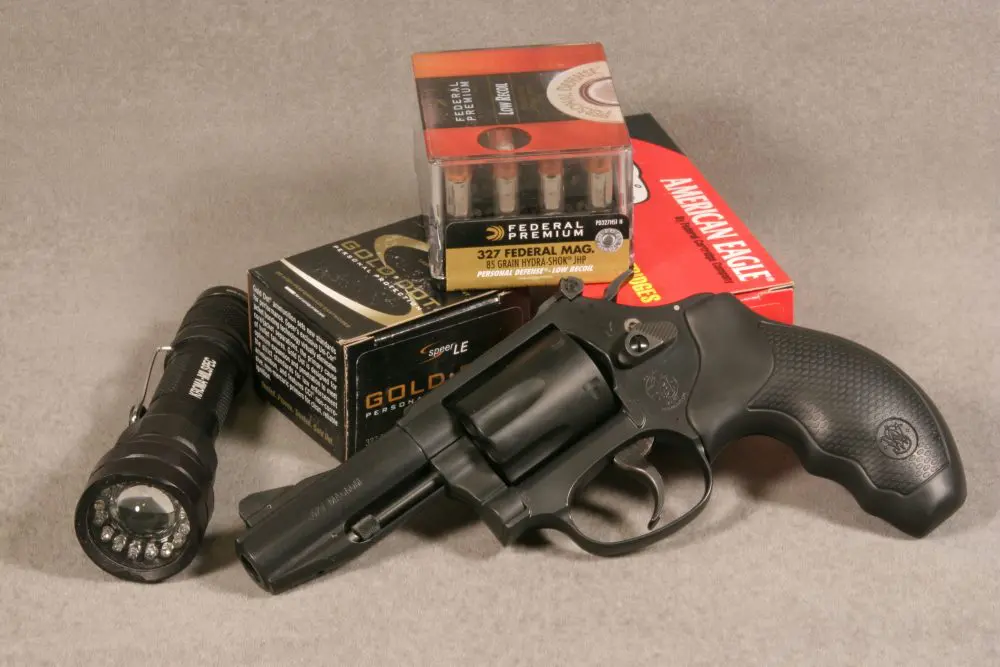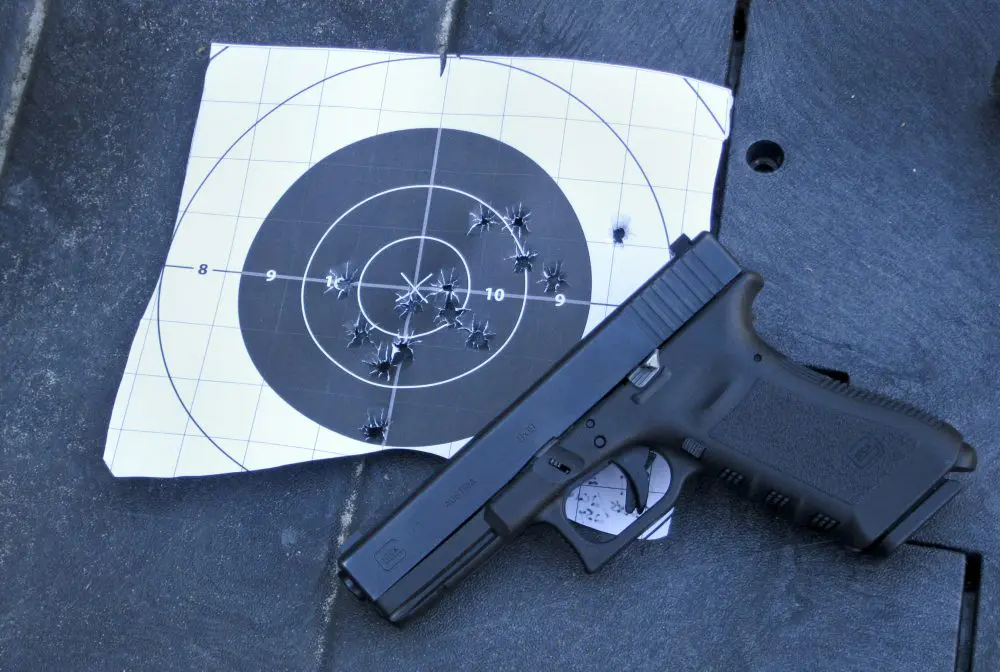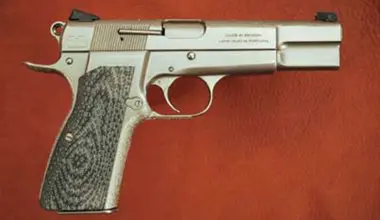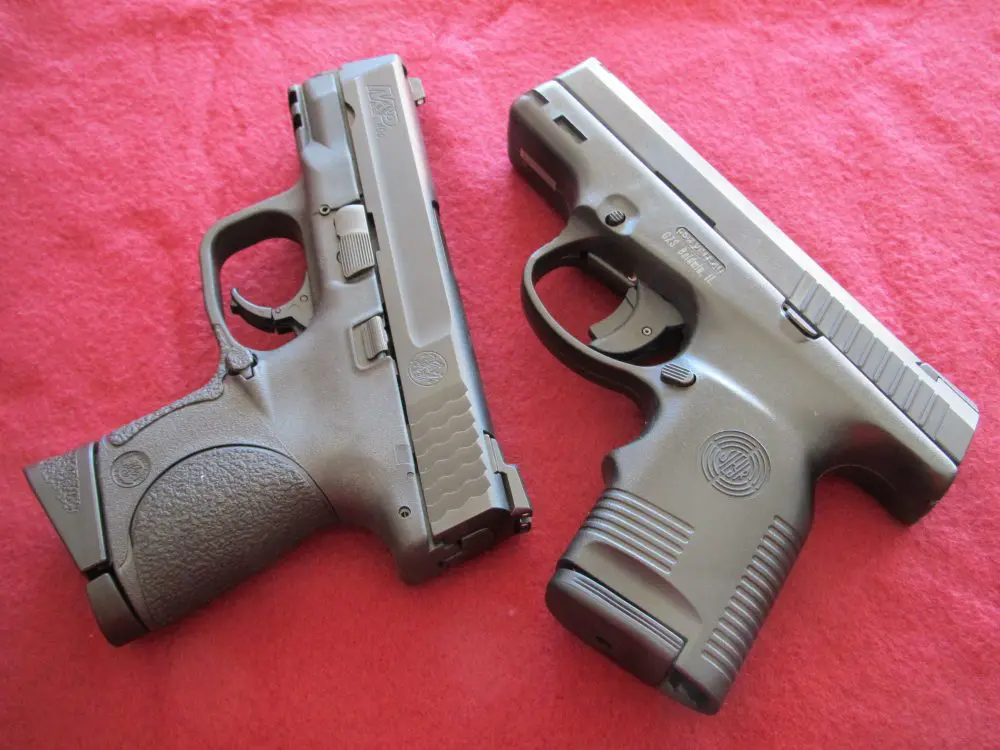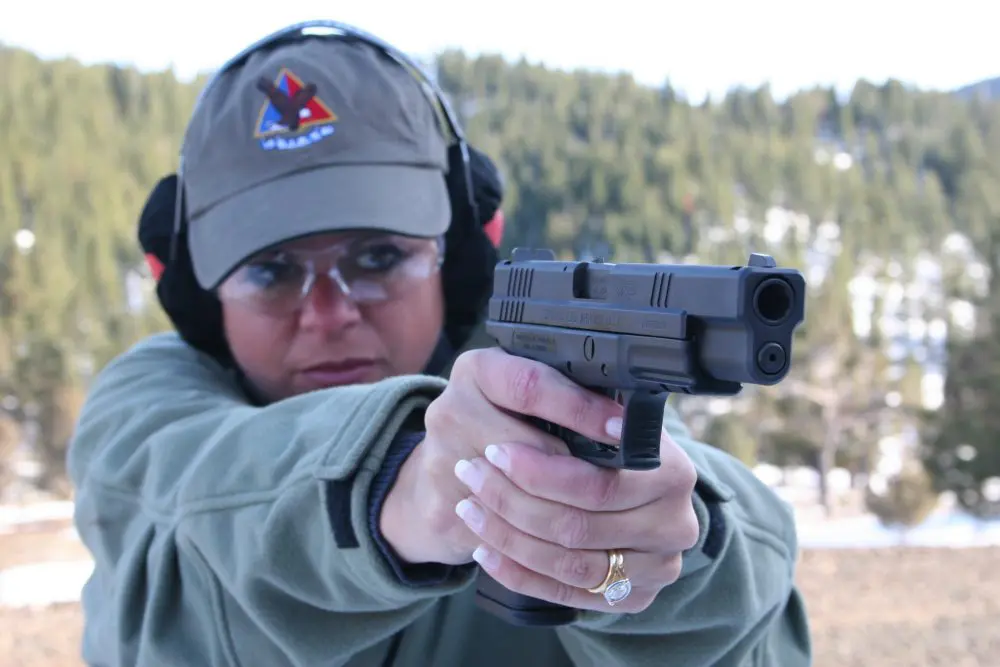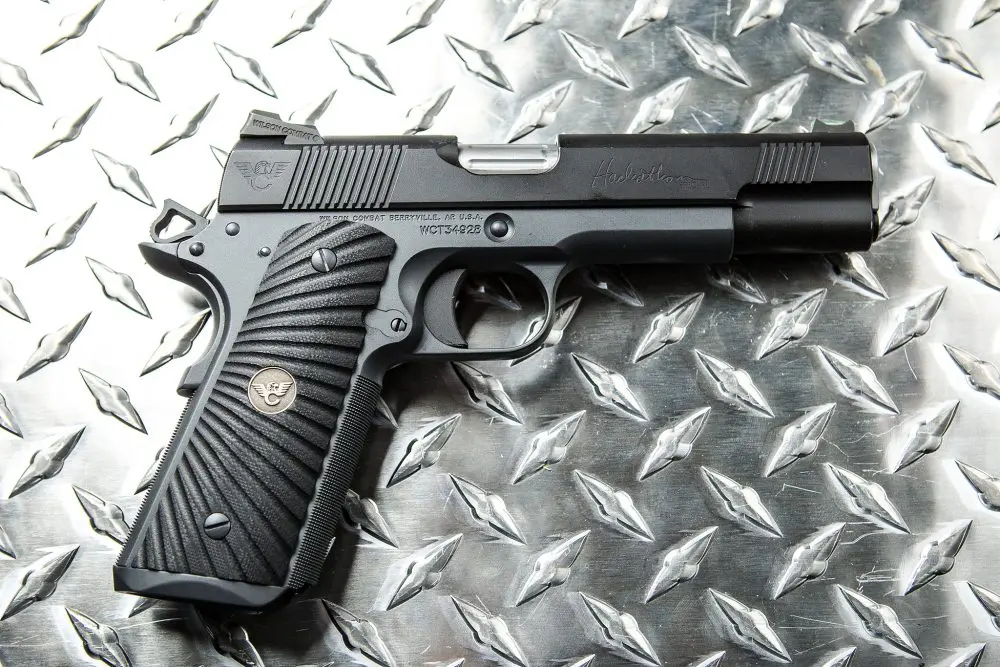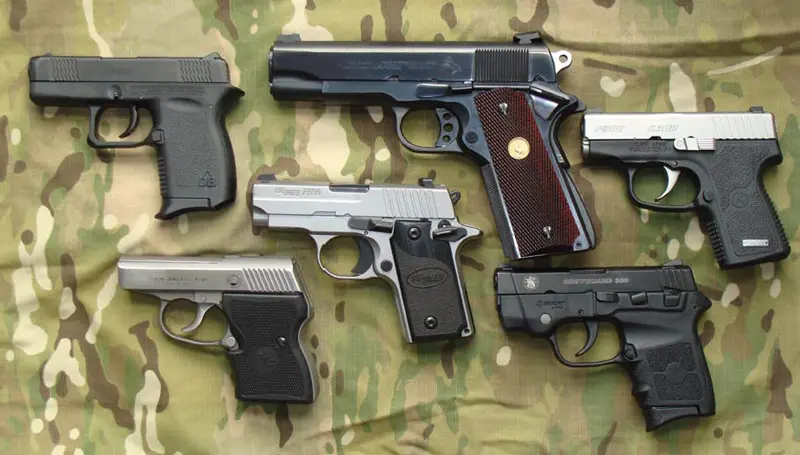
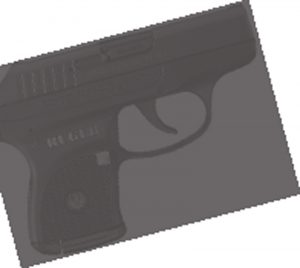
It’s a common question because .380s are a popular product these days. Modern design and technology mean pistols can be smaller and more comfortable to shoot, conceal, and carry. In the pages of this very magazine you’ve read many articles (some pro, some con) on .380 pocket pistols, which reflects how popular they’ve become.
Personally, I think there is definitely a place for .380 pocket pistols. I normally carry a 4-inch barreled semi-auto in 9mm or .40 S&W situated in an OWB (outside the waistband) holster. Under certain circumstances, I’ll replace my regular gear with one of the highly concealable .380s and an NTAC holster that can switch between OWB and IWB (inside the waistband). While I find IWB uncomfortable while carrying a fullsized pistol, I don’t mind carrying a small pocket pistol in an IWB holster for the ultimate in concealment. Note that despite the frequently used misnomer, I do not recommend carrying any pistol in a pocket.
But I understand the limitations of these so-called “pocket pistols” and prepare accordingly. The studious readers of this magazine can evaluate their needs. If you believe a pocket pistol fits into your world, then this article will hopefully prove a good primer for your own selection process. Keep in mind that the most crucial aspect of selecting a pistol is how it fits the individual’s hands. This is especially true when it comes to pocket pistols, so go out there and try a few before you buy. And remember, you’re going to have to train with this pistol.
My initial idea was to test the following pistols on my own, as I would with any other review. But due to the very personal nature of these pistols, I departed from the norm and enlisted the help of a dozen individuals of varying experience. My panel included military veterans, law enforcement officers, instructors, and private citizens. Polling these shooters helped me glean far more information than I could have learned on my own. Thanks to all those who participated in these trials.
The first thing the entire group realized was that these pistols were much easier to shoot than the pocket pistols of old. Technology has come a long way, and many of these pistols boast features once found exclusively on full-sized pistols. Accuracy was surprisingly high with all the pistols we tested, and many of the shooters enjoyed competing in games of accuracy with the pistols of their choice. Without further ado, let’s look more closely at each of these lucky seven.
Table of Contents
NORTH AMERICAN ARMS GUARDIAN
The North American Arms all stainless steel Guardian stands out due to its polished slide and sleek appearance. Fit and finish on this pistol were excellent, and it was utterly snag free. The Guardian’s sights are the less desired “slotted” type in the top of the frame. The model I tested had tritium night sights and actually functioned extremely well, even drawing praise from some of the shooters in the test group when they were able to maintain high accuracy with the Guardian.
The model we tested also came with a set of Crimson Trace Lasergrips. Personally, I am not a fan of lasers on a pistol, but all shooters recognize that Crimson Trace is the clear leader in this arena. Simply gripping the pistol activates the compact, yet powerful, laser. For most shooters, that was the highlight of this particular gun.
The Guardian does not have a locking slide. Its magazine release was easy to work, and magazine changes were a breeze. It even has optional extended grip magazines with ten-shot capacity. It was the only pocket pistol in the group to have a direct blowback action, which means the recoil was by far the worst of the bunch despite its considerable weight (19 ounces unloaded, second only to the SIG P238). The trigger is a very smooth double-action, and there is no safety.
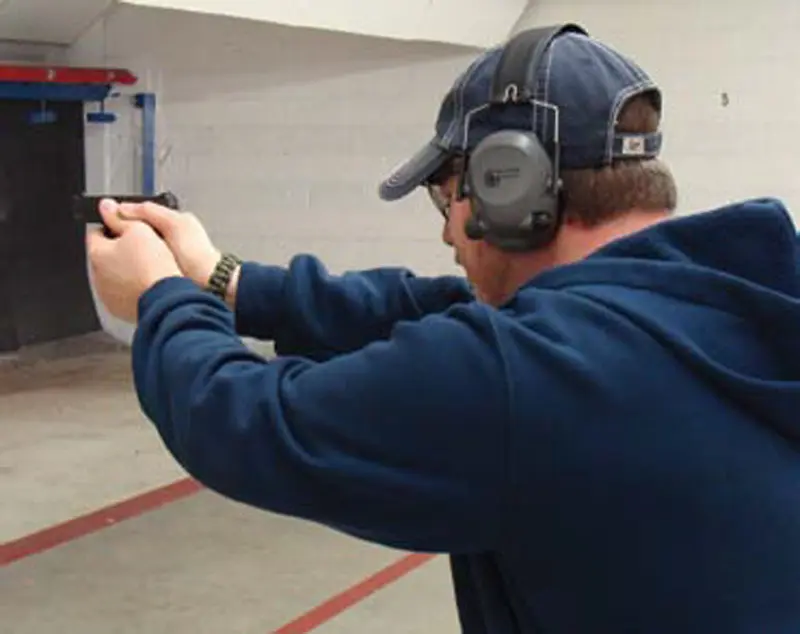
My biggest problem with this pistol was the grip. While it was comfortable for my hands, the back of the grip felt vague. On a couple of occasions, I unknowingly gripped the pistol too high and got slide “bite.” Luckily, I was wearing Kevlar shooting gloves at the time. I warned each shooter thereafter of this problem, because I didn’t want anyone else to get bitten. This problem could be fixed with a slightly modified grip, possibly one with a beavertail to provide a better stop for the hands. An improved grip would also help with recoil mitigation. Overall not a bad pistol, but the recoil and grip made it the least favorite with the group.
DIAMONDBACK FIREARMS DB380
The DB380 was a completely new pistol to me. At first glance, I thought it was a Glock clone, but although it shares some features with the Glock, it is a new pistol. It is striker fired, with a firing pin block, but does not have a safety in the trigger or grip, nor does it have a manual safety. It is without a locking slide.
The sights were adequate for a pocket pistol, being of the typical raised type with white inserts. The trigger is listed as double-action, but in reality it is a long single-action trigger designed to mimic the “safer” pull of a double-action. The pull of the trigger only drops the hammer. To cock the hammer, you must rack the slide or discharge a round. Unfortunately, many manufacturers have begun calling these types of triggers “double-action” according to their own definitions. The reasons behind this could fill their own article and won’t be tackled here, but going forward I will let you know when we’re talking about a true double-action.
The DB380’s grip felt extremely cramped and unnatural. One of the shooters trying the DB380 for the first time was a woman with small hands, and she remarked that the grip was very comfortable, so keep that in mind. The magazine release was very difficult to operate. It required a serious effort that frustrated all the test subjects. While some shooters enjoyed the Diamondback, its grip and magazine release kept it down toward the bottom of the group in terms of preference. Still, not a bad gun.
KAHR P380
Most of the testers had a low opinion of Kahr going into the testing. I don’t honestly know why it took some convincing to get shooters behind this gun, but once they did, they were pleasantly surprised. This particular Kahr P380 featured a set of premium Trijicon night sights, a black polymer frame, and stainless steel slide.
All P380s are striker fired with a double- action trigger (actually a long singleaction) and a locking slide. The trigger pull was smooth and predictable, and everyone remarked how good it felt in the hands. The grip slide and angle were comfortable for every shooter in our group, and its edges were smooth and snag free. Recoil was very mild for a pistol of this size. The magazine release was in a comfortable position, and mags easily dropped free.
Accuracy with the Kahr was amazing. I drilled practically the same hole continuously at the tested distance (12 feet). It did fail to feed on four occasions, but with the widely differing array of .380 ammunition (including some particularly dirty stuff from Russia), I’m not ready to throw this pistol under the bus. Overall, this was the biggest surprise of the group, and most shooters said they would definitely consider buying a Kahr P380.
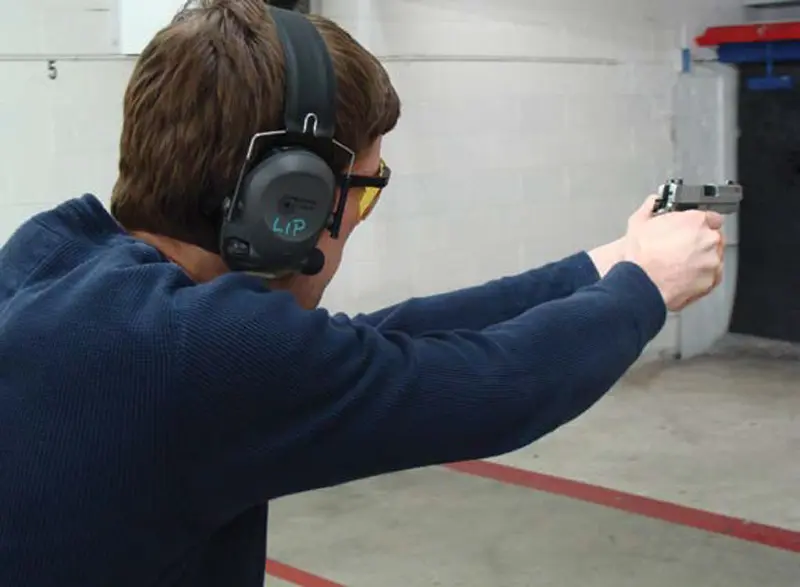
TAURUS TCP
The Taurus TCP is a very thin profile pistol—even for this genre—but in the hand it isn’t entirely uncomfortable. Most shooters found the grip angle to be manageable. Recoil was on the sharp side, but acceptable.
Shooters were very pleased to see that the TCP locks back after the last round is fired. The magazine release was a bit finicky on the test model, but overall not bad. The trigger was long and heavy, but satisfactory for a pistol of this type. The TCP earned high marks from the test group, except in one important category.
Sights on the TCP were diminutive. This bothered some folks, and for good reason. While you could argue that a pocket pistol isn’t supposed to have great sights, most of the pistols in this group prove otherwise. That isn’t to say the pistol isn’t accurate. If you take the time to align the anorexic sights, the pistol does its job. Taurus did right in including the locking slide, but it should have taken one more step and included better sights as well. This pistol finished in the middle of the group for most shooters.
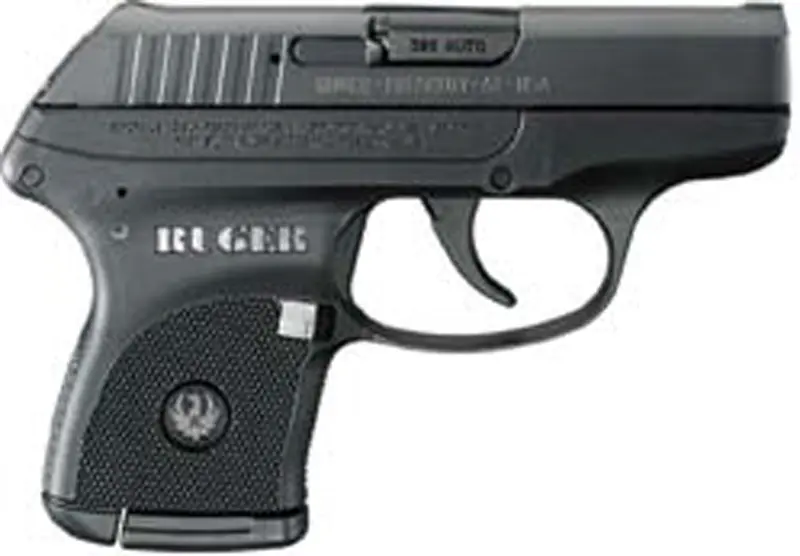
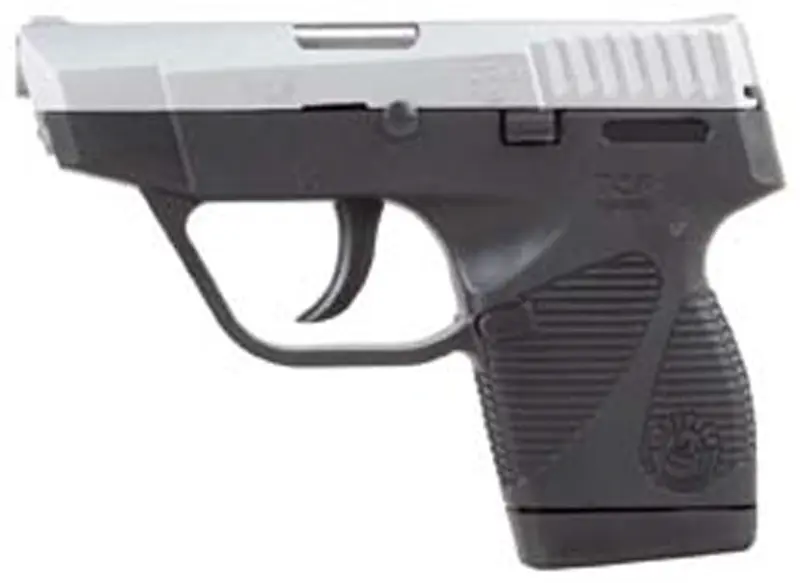
RUGER LCP
The test group frequently confused the Ruger LCP with the Taurus TCP. Like the TCP, the Ruger LCP is very slim, and its sights are similar to the TCP’s. However, the Ruger does not have a locking slide, and most felt it did not have quite as comfortable a grip angle.
The recoil, also similar to that of the Taurus, was on the sharper end of the scale. Trigger pull was long and heavy, but manageable. There are no external or manual safeties, and the magazine release operated easily.
The Ruger LCP can be purchased with a laser, but our model did not have one. Personally, I am perplexed as to why a company would forgo decent sights but offer a laser on a pocket pistol. This seems backward to me, but I’ll let you be the judge.
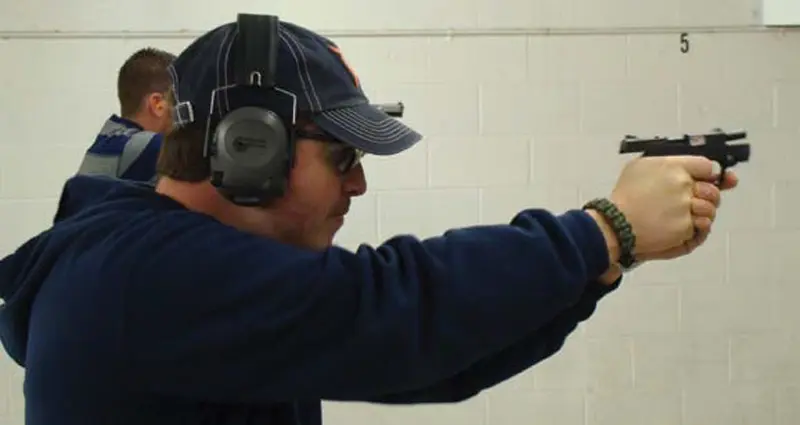
SIG P238
Do you like shooting 1911s? Do you enjoy a short-pull single-action trigger with a manual safety? If so, the SIG P238 is for you. Many in the test group remarked how much like a 1911 the P238 felt. In fact, the P238 is essentially a clone of an older design. Dubbed the Mustang, the Colt version of this pistol enjoyed some success in the past, and SIG recalled it into service to compete in the Pocket Pistol Wars.
One of the serious flaws of the Colt Mustang is the ejector. During normal operation, the ejector works fine, but disassemble a Mustang and you might find the ejector will “fall” down into the frame and is a royal bugger to fix. Unfortunately, SIG did not fix this design flaw in the P238, and yes, it did happen to me. Luckily, the solution to this problem is all over the Internet. It’s not particularly hard, but it is time consuming and something that a pistol of this quality and price—it is the most expensive of the group—should be without.
Fortunately for SIG, this pistol shoots incredibly well. It really does feel like a 1911, and it had (by far) the mildest recoil of the bunch. At 20 ounces, it is also the heaviest pistol in the group, but compared to my full-sized pistols, this thing disappears on my hip. The sights, grip, and magazine release will be very familiar to any experienced 1911 shooter, and of course, the slide locks on the last round. It is available with extended magazines that allow you to get a better grip on the gun.
The SIG P238’s performance helped me forget about the ejector, but many folks in the test group had another beef with this pistol. Unlike a 1911, the P238 does not have a grip safety. Yes, it does have a manual safety, but many people felt uncomfortable that the only thing preventing the short, light, truly single- action trigger from being tripped is a manual safety that can easily be switched off accidentally.
I can’t blame folks for having this opinion. I myself carried a Colt Combat Commander for many years, and I found the manual safety disengaged on two occasions. In fact, I took the pistol to Marianne Carniak—a renowned 1911 gunsmith local to me—and asked her to install a new detent and heavier spring to prevent this from happening again. Even before the “problem” was solved, I still felt comfortable knowing that the grip safety was there. I should note that the safety on the model tested did not switch off, nor did it ever feel like it might.
S&W BODYGUARD
Of all the pistols in this group, none confounded shooters as much as the Smith & Wesson Bodyguard. It brought with it an incredible amount of hype, and coming from one of today’s hottest pistol manufacturers, it also carried heavy expectations. Out of the box, all Bodyguards have decent sights and a built-in laser. This little pistol has a wonderful true double-action trigger that is heavy enough to make it very safe to carry. If that’s not enough for your peace of mind, it also has a manual safety that’s a bear to engage, but disengages very easily.
Shooting the Bodyguard was a pleasurable experience. This pistol is comfortable and functions flawlessly. But what about that laser? Someone at S&W dropped the ball there. First, the laser in the model I tested was dim—maybe half as bright as the Crimson Trace Lasergrips that came with the North American Arms pistol. Second, the laser was extremely difficult to operate. There’s a button on either side of the pistol, just under the muzzle, that activates the laser. However, you must exert a ton of force in order to turn the laser on! In practical shooting drills, the laser required such an effort to activate that it was completely abandoned. The sights on the Bodyguard being more than adequate, every shooter asked, “Can I buy it without the laser?” No, you cannot.
Smith & Wesson should think about selling the Bodyguard without the laser, or just do away with it completely and let Crimson Trace develop a laser for it. The Bodyguard is the embodiment of advanced technology and exactly what a modern pocket pistol should be, except for that horrible laser permanently tethered to it. I’m predicting right now that S&W will have some changes to the design of that laser soon.
Despite this, it was still at the top of the list for most of the test shooters.
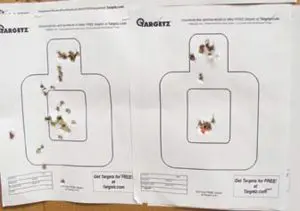
THE WINNER
And the winner is … you. The popularity of .380 pocket pistols has spurred serious competition for your dollars. This is evident when you see how far the designs of these pistols have come over the years. Heck, just one look at the Bodyguard is like peering into the future. Any one of these pistols could suit you well.
For my money, the SIG P238 is my personal choice. I wouldn’t want to carry it in my pocket, but then again, pocket pistol is really just a cute name, not a sound method for carrying a firearm.
That’s why I had the folks at NTAC Custom Holsters create a rig for the P238. This holster switches from inside to outside the waistband by simply swapping out the belt loops. It even allows you to tuck in a dress shirt around the pistol while wearing IWB. I wore the P238 for several weeks in this holster. Not only is it safer carrying the pistol in a holster, it’s much more comfortable.
Am I going to carry the SIG P238 every day? No. My primary carry weapon will always be a full-sized pistol in a full-sized caliber. But as a backup or an alternative for those times when a fullsized pistol isn’t practical, I’ll happily carry the P238 with modern self-defense ammunition.
So which one should you buy? The most important feature in any handgun is how it fits your hand. While the Diamondback feels cramped to me, it may fit you well. The pistol that fits you best is the one you’ll shoot most often, master more quickly and carry always. A pistol that doesn’t fit your hand is a handicap.
Once you’ve narrowed down your selection to those pistols you feel are the most comfortable, you must then consider price, quality and features. This is where the buying decision becomes very personal to you. Don’t let anyone steer you into buying something you otherwise wouldn’t buy.
Polling the shooters who assisted me with their feedback put the SIG at the top of the list in terms of pure shootability, and obviously I agree. The Smith & Wesson was the next most popular pistol on the list. With a long but smooth and truly double-action trigger and manual safety, everyone considered the Bodyguard safe to carry and very fun to shoot. The Kahr P380 narrowly squeaked into third place. The rest of the pistols all fared well, but they just weren’t favorites.
The tough part is now yours—making the right decision for yourself. Hopefully the results shown here will help.
